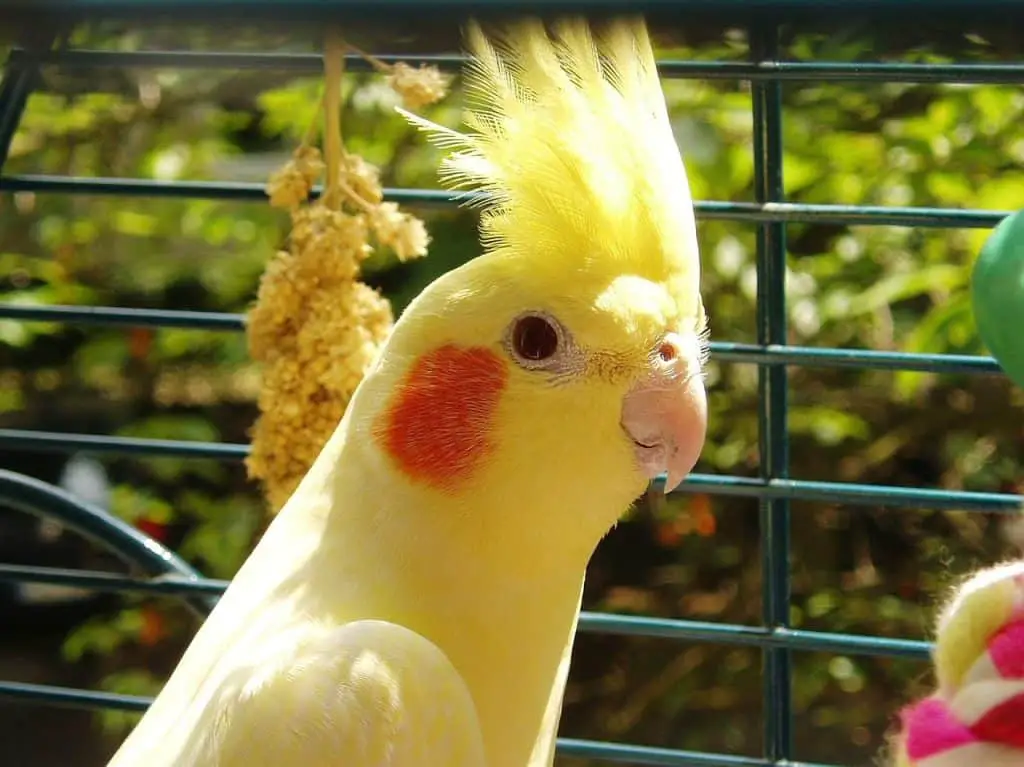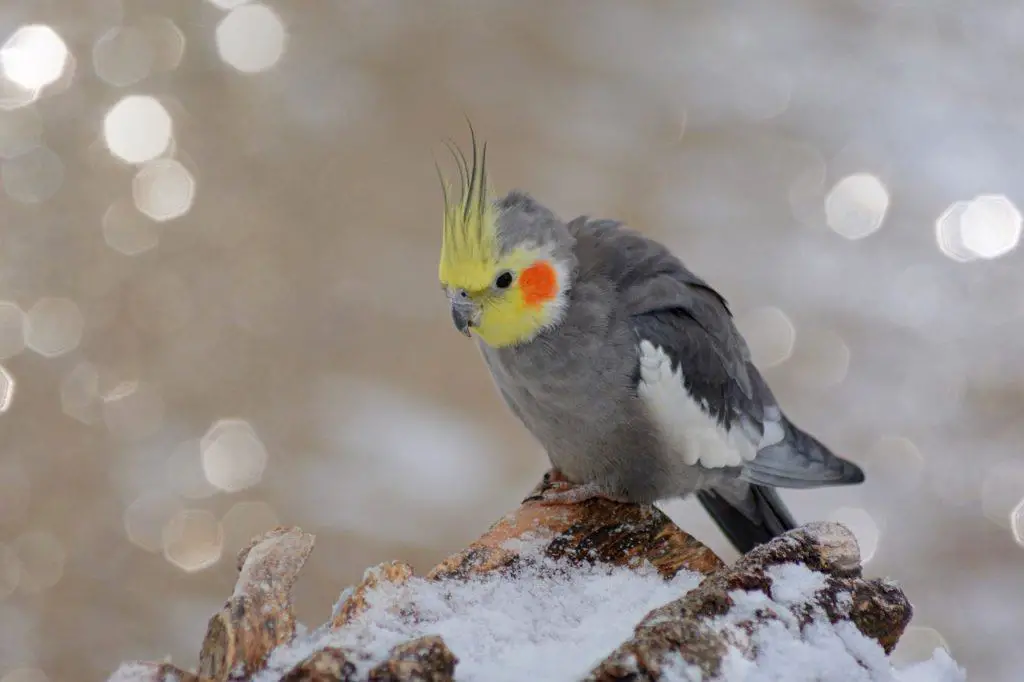Are you a proud owner of a cockatiel wondering when your feathered friend will experience their first molt? Molting is a natural process where birds shed and replace their feathers. Cockatiels generally undergo their initial molt around 6 months of age, although various factors can influence the timing. In this blog post, we’ll delve into everything you need to know about when do cockatiels molt!
What is molting and why do birds do it?
Molting bird is the natural process that birds go through to replace their old feathers with new ones. It’s a very important process, as flight feathers play a crucial role in protecting birds from the elements and helping them to fly. Birds molt several times a year, depending on the species.
Pin feathers are tiny, immature feathers that poke out of a bird’s skin while it is molting. They can be very uncomfortable for the bird, and often make it difficult for them to fly or eat. While the feathers are growing in, the pin feathers can be a target for parasites and bacteria. That’s why it’s important to keep your bird groomed and free of debris while he or she is molting.
For a molting cockatiel, blood feathers may start to appear. Blood feathers are sharp and can easily bleed, so it’s important to be careful when handling your bird during this time. If your bird starts to bleed, apply pressure to the wound and seek veterinary assistance if the bleeding doesn’t stop.
When do cockatiels molt?

Cockatiels typically undergo their first molt at around six months old, but there are a lot of variables that can affect when your bird will molt. Things like cockatiel’s diet, environment, and health can all impact when a bird molts.
Some cockatiels may go through more than one molt a year, while others may not have any at all. There’s no set schedule for molting in cockatiels – it varies from bird to bird.
Occasionally, a bird will experience an abnormal molting. This can be caused by a number of things, including stress, illness, or dietary deficiencies. If your cockatiel starts to lose feathers at an unusual rate, or if you notice bald patches on their skin, take them to a veterinarian for a check-up. The avian vet may be able to diagnose the cause of the abnormal molting and help to get your bird back on track.
Molting for Adult Cockatiels
Molting is a natural process that all birds go through, and cockatiels are no exception. Adult cockatiels typically undergo their first molt at around 18 months old, but there are a lot of variables that can affect when your bird will molt. Things like cockatiel’s diet, environment, and health can all impact when a bird molts.
What should I do if my cockatiel is molting?
If you notice that your cockatiel is starting to lose feathers, don’t worry! This is normal behavior during the molting process. However, you’ll want to make sure that your bird is getting enough food and water. Molting can be very stressful for birds, so it’s important to make sure they’re well-fed and hydrated.
If your pet cockatiels seems to be struggling during the molting process, you may want to consult with a veterinarian. They can help ensure that your bird is healthy and comfortable during this time.
An Avian vet is specially trained to treat birds, and they can help ensure that your pet is healthy and comfortable during this time.
If your cockatiel is molting, it’s crucial to handle them with care, especially when blood feathers are involved. Blood feathers are newly grown feathers that contain blood vessels, making them sharp and susceptible to injury. When handling your bird during this period, be gentle and avoid touching these feathers to prevent bleeding. If you notice any bleeding from a blood feather, apply gentle pressure to the area and seek veterinary assistance if necessary.
How long does molting last?

Molting usually lasts for several weeks, but again, it varies from bird to bird. Some birds may lose feathers quickly, while others may take their time shedding their old plumage. As long as your cockatiel is eating and drinking normally, there’s no need to worry – they’ll take as long as they need to complete the molting process.
What are the signs that your cockatiel is about to molt?
There’s no surefire way to tell when a cockatiel is about to molt, but there are a few signs you can look for. If your bird is starting to lose feathers, it’s likely that they’re in the midst of molting. You may also notice that your cockatiel is spending more time than usual preening its feathers. This is because the new feathers are still growing in and need to be groomed properly.
If your cockatiel is plucking its body feathers, this is also a sign that they may be about to molt. Plucking can be a sign of stress, so if your bird is plucking excessively, you may want to consult with a veterinarian.
Feather plucking in molting birds
It’s not uncommon for birds to start plucking their feathers during the molting process. This can be a sign of stress, and if your bird is plucking his feathers excessively, you may want to consult with a veterinarian. They can help you determine if there’s anything wrong and offer suggestions on how to help reduce your bird’s stress levels.
How can you help your bird through the molting process?
If your cockatiel is in the midst of molting, there are a few things you can do to help them out. First and foremost, make sure they’re getting enough food and water. Molting can be very stressful time for birds, so it’s important to make sure they’re well-fed and hydrated.
You may also want to provide your bird with some extra toys and perches to help keep them occupied. Molting can be a long and tedious process, so providing your bird with some distractions can help make it a little bit easier.
If your bird seems to be stressed out during the molting process, you may want to consult with a veterinarian. They can help ensure that your bird is healthy and comfortable during this time.
What should you expect after your bird’s first molt?

After your bird’s first molt, you can expect them to look a little bit different. They’ll have new feathers growing in, which may make them look a little bit different than they did before.
Your bird may also start acting a little differently after molting. They may be more active or more vocal than they were before. It’s important to give your bird some time to adjust to their new feathers – don’t expect them to be the same bird they were before the molting process.
- STURDY METAL CONSTRUCTION: Constructed of quality wrought steel coated with rust-and water-resistant hammered paint, this divided breeder cage boasts excellent strength and durability, which is ready for your birds to use for years to come.
- FLEXIBLE BREEDING CAGE: The dividing grate helps divide this wide bird cage into two individual breeding/living spaces for housing two or more birds. Each bird cage system contains 2 perches, 2 feeders, a lockable door, a side nesting door, a pull-out tray and a grate. Or you can remove the middle grate to make it a bigger cage.
- STACKABLE FOR MORE VERSATILITY: Got many birds but had limited space to keep them? This stackable breeding cage is your best solution. You can pile up two or three cages together to efficiently leverage the vertical space in the room and save space.
- PET-PARENT FRIENDLY: Four perches and four plastic cups are included for your convenience. The cage has 4 feeding doors on the face for easy seed and water refilling.
- EASY CLEANING: With the waterproof finished cage and the bottom slide-out tray, cleaning for this cage would be a breeze for pet parents. The pull-out grate at the bottom prevents birds from walking in its excrement.
Frequently asked questions about molting in cockatiels
Are cockatiels prone to stress during the molting process?
Molting can be a very stressful time for birds, so it’s not uncommon for cockatiels to experience stress during this process. If your bird seems to be stressed out, you may want to consult with a veterinarian.
How long does molting last for cockatiels?
Molting usually lasts for several weeks, but it varies from bird to bird. Some birds may lose feathers quickly, including their tail feathers, while others may take their time shedding their old plumage. As long as your cockatiel is eating and drinking normally, there’s no need to worry – they’ll take as long as they need to complete the molting process.
It’s important to monitor their behavior during this time; increased preening or occasional irritability can be signs of discomfort as new feathers grow in. Providing a calm environment can help support your bird through this natural phase.
Can other animals besides chickens go through a moult cycle and shed feathers like humans do every summer/winter season?
While it’s not common, other animals besides chickens can go through a molt cycle. This is when they lose their old feathers and grow in new ones. Molting typically occurs during times of change – such as summer or winter – but it can vary depending on the animal’s environment.
Tips for a Smooth Molting Process
1. Enhance Diet with Nutrient-Rich Foods: During molting, it’s crucial to provide a balanced diet. Consider adding fresh vegetables like spinach or carrots, and high-quality pellets that contain essential vitamins and minerals to support feather growth.
2. Maintain a Comfortable Environment: Ensure your cockatiel’s environment is stress-free. Keep the cage clean and provide plenty of quiet time. Avoid sudden changes in their habitat, as this can increase stress during molting.
3. Offer Extra Bathing Opportunities: Many cockatiels enjoy bathing, which can help soothe their skin during molting. Provide a shallow dish of water or mist them lightly to encourage bathing behavior.
Takeaways
Molting is a natural process that all birds go through, and cockatiels are no exception. If your cockatiel starts losing feathers, including tail feathers, don’t worry – this is normal behavior during the molting process. Make sure they’re getting enough food and water, and they’ll take as long as they need to complete the molting process. After their first molt, expect your cockatiel to look and behave differently than they did before.




